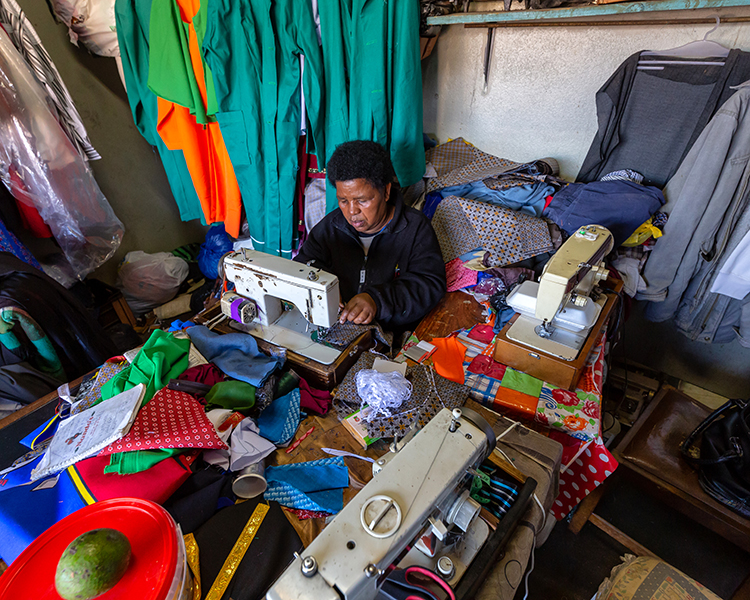
A GUIDE TO VIDEO PRODUCTION
Video production is the marriage between visual and audio elements to produce a comprehensive and concise piece of content that optimises topical communication. Professional video is the combination of multiple disciplines including design, sound recording, film, animation, script writing and marketing. In this article we will be breaking down all facets of video starting with the most basic of questions.
What is Video Production?
Video is an electronic/digital medium for the recording and broadcasting of visual and audio media. This is the most rudimentary breakdown of video as a medium, however it must be noted that for the sake of this content we will be referring to video as traditional video which involves filming. Despite other mediums of content qualifying as video in terms of their technical descriptions, such as animation or live streaming.

What is Video Production Good for?
- Recording real life occurrences, whether that be people, places or procedures.
- Providing a comprehensive visual and audio summary in a concise package.
- Entertainment, video is very flexible in nature and can be combined with other mediums to further enhance the content experience.
- Education, video can be enhanced and modified to aid in the viewers understanding of the lesson.
What is the Video Production Process?
Every video production goes through a similar process starting with:
Step 1: Planning, involves onboarding of production team and stakeholders to identify main video goals, available resources and timing.
Step 2: Script Writing, involves working with subject matter experts to ensure the script is relevant and accurate. A good script will include a shotlist to ensure the filming goes smoothly.
Step 3: Filming, this involves a well planned shoot with proper equipment and all the necessary team assistance to ensure the shoot is as productive as possible.
Step 4: Editing, involves all the graphic design and footage manipulation. If there is voice recording required it is typically performed during the editing phase.
Step 5: Video mastery, involves finalising the video and producing it in the correct formats for distribution. Depending on the nature and purpose of the video content, there may be additional processing and duplication involved.

Important Video Production Metrics
There are many essential video metrics that play a massive role in the content’s performance and compatibility which should be carefully considered, they include:
Video Production Length
The average viewer has an attention span of eight seconds, which means your video should be as comprehensive and concise as possible. That is why every second should be carefully considered and scrutinised. This is also an important consideration for budgeting, as each second of video often stems from multiple seconds of footage. This means the longer your video output is, the more expensive it will become.
Additional Media
Video is a versatile medium that can be enhanced using additional media like animation graphic design. Complementary media can aid in providing video context, keep the content captivating and improve the viewers topical understanding. We highly recommend providing links to all your social media, website and other content
Search Engine Optimisation
All video content is distributed or accessed through the internet, usually on a platform like Youtube or Vimeo. Unless your content is meant to be private, it is critical that every video clip is optimised for search. Keep in mind some platforms have their own unique features for optimisation, which is why we recommend studying the platforms prior to publishing
Story
Your video content should be created with a goal in mind. Video is the medium used to convey your message in a manner that achieves those goals. Your video content should tell a story, one that is contextual, comprehensive and captivating. We recommend working closely with subject matter experts to ensure your message is relevant and reliable.
Production Value
This refers to additional resources or measures taken to improve the production quality of the video content. Increasing production value will keep the viewer engaged for longer, which in turn improves your videos overall performance. Keep in mind that there is usually a sweet spot for production value, where adding more ‘bells and whistles’ does not aid further in the viewer’s experience. Creativity also plays a massive role in production value; some ideas do not need additional resources to be executed properly.
Creativity
As discussed above, video is a multi-disciplined field which also means the possibilities for creativity are limitless. With any creative process, always start with your goals. Facilitate communication and feedback with every essential member of the production. The more intimately the production crew is involved with the client, the more potential there is for creative solutions. For more complex subject matter we recommend increasing your frequency of feedback and breaking the production into smaller phases to aid this process. Experience counts highly, but without proper understanding of the clients content goals, the video production will fall on deaf ears.

Video Production Planning Process
Every video production involves multiple individuals with specialised knowledge, which means proper collaboration is essential. A well planned video will allow you to maximise your available resources, which directly affects the overall production value. To facilitate the planning process as efficiently as possible consider the following steps:
Step 1: Identify key contacts, every video production has a similar process which means your key contacts need to provide input and feedback every step of the way. This also helps to identify each member’s role in the production keeping everything on track. Every key member has a specific expertise and role, this ensures all feedback and input is done in a manageable manner. The term “too many cooks spoil the broth” really applies here and could even result in a failed project or deadline.
Step 2: Establish channels of collaboration, to ensure every project member is collaborating in the same space. This also helps keep all the project communication centralised and easily auditable.
Step 3: Write up a project plan, make sure to include all project interaction and frequency of feedback based on project milestones. This is absolutely essential as providing late feedback will result in additional costs. For example: Making changes to the script once the final video is being reviewed will result in additional editing and costs such as voice artists, translators and animation.
Step 4: Sign off every project phase or milestone, to ensure all project members are satisfied. This will also speed up production as it imposes stricter deadlines on each phase. Make sure to communicate this with your team to ensure everyone understands the importance of timely feedback. Sometimes top management gets involved in a project way too late, which results in huge delays or even additional costs. Particularly between production phases where changes may set back the project to the previous phase.
Writing Process
Writing a script is a collaborative process that typically involves a script writer and subject matter experts. It is essential that the writer has a strong grasp on working with experts, which is usually facilitated by online collaborative tools like Google Drive. A good video script has following attributes:
- Contextual – The script provides clear context for the subject matter at hand.
- Storytelling – A compelling script tells a strong and relatable story.
- Comprehensive shotlist – A strong script has clear shot direction for filming and post-production.
- Formatted – a script should be written and formatted in such a manner that is easily readable by the voice artist. We recommend avoiding tons of technical jargon, acronyms and exceptionally long sentences where possible.
Bonus Tips
- If the subject is particularly complex or specialised, we recommend breaking the script writing phase up into multiple phases with sign-offs.
- Write like you speak. It sounds obvious, but this is a common mistake we find when clients write their own scripts.
- When working with subject matter experts, employ collaborative language when criticising their inputs or writing. This will reduce the project’s potential for conflict.

Client and Supplier Roles and Responsibilities
To break down the client and supplier roles and responsibilities we will split them according to the phases of video production:
| Phase | Client | Supplier |
| Planning | Role: Delegator Responsibilities: Identifying key team members, planning and organising dates, identifying project goals, communicating project deadlines, final review of project plan and sign off. | Role: Consultant Responsibilities: Facilitating channels of communication, establishing platforms for collaboration, advising client on project goals and project plan. |
| Script Writing | Role: Information facilitator/Subject matter expert Responsibilities: Providing accurate information, providing script context, timely review of script and sign off. | Role: Collaborator Responsibilities: Aligning information with project goals, facilitating collaboration with subject matter experts, writing script, creating shotlist, managing feedback, providing translation (if required). |
| Filming | Role: Site and team member facilitator Responsibilities: Preparation of site prior to filming, facilitating safe navigation of site for film crew, organising key team members for filming, assisting film crew with additional site logistics, reviewing footage and sign off. | Role: Film crew + Director Responsibilities: Filming, creative direction, managing equipment, directing key members, shot framing, providing client with footage. |
| Editing | Role: Reviewer Responsibilities: Reviewing drafts as per the project plan, facilitating key members for review, providing feedback on design, reviewing voice recordings, reviewing background music, reviewing final draft and sign off. | Role: Editor Responsibilities: Audio and visual editing, providing client with edited drafts of video, creating subtitles, recording voice artists, animating motion graphics, Applying client feedback to updated video drafts, facilitating client feedback. |
| Video Mastery | Role: Reviewer Responsibilities: Reviewing final draft of video, providing supplier with logistical feedback on video outputs, confirming video formats, finalising project plan and sign off. | Role: Consultant Responsibilities: Final video configuration, video mastery, formatting of final videos, duplication and copying of videos (if required), facilitating final project review. |
Key Points
It is important to highlight that the supplier should be providing the client with proper guidance through each step of production. The client is the subject matter expert, whereas the supplier is the production expert. Proper communication and collaboration is essential to ensure every resource available is used to its maximum potential. It is also of utmost importance that each phase is signed off to ensure there is no repetition of production phases, even more so when there are additional teams or parties involved. Mismanaging your available resources will result in a loss in overall production value, this can be especially punishing when dealing with limited resources such as filming in a foreign location or filming high-value individuals. At the end of the day, time is money; make sure you plan well to make the most of yours.

Video Production Costs
Video production can range greatly in cost, depending on various factors such as production value, locality, accessibility to resources and content goals. In general, more budget results in more production value, however sometimes a little creativity can go a long way. Of course, for any creative solution, it all starts with proper planning.
Planning
Consultation – Depending on the nature of the project, sometimes an external consultant is required. Foreign country’s may pose cultural challenges, even more so when dealing with different languages and extensive travel.
Script Writing
Translation – Translations often span across multiple stages of the video production process. Always have a third party review the translations before voice recording takes place. Have your translations signed off before commencing with your recordings, bad translations can have a disastrous impact on a project.
Filming
Crew – Additional crew may be required for specialised locations or shots. We recommend when traveling and filming to keep your crew as small as possible.
Travel – Plan your travel and accommodation in advance to save your budget. This is especially important when traveling to more obscure locations where travel is a lot less accessible.
Specialised equipment – Some shots require specialised equipment to achieve, such as a drone or crane for an aerial view.
Talent – When hiring external talent make sure to plan your shoot well so that no time is wasted. Depending on the nature of the video, there may be additional royalty fees incurred by the talent. Always consult your talent agency before booking someone.
Location – Some locations require booking and additional fees which range from venue hire, all the way through to set design and make up.
Editing
Design – Motion graphics play an important role in representing a company’s brand, it also keeps the content professional looking. Additional animation may also be added to improve the overall production value.
Voice Artist – A professional voice artist is a great way of improving the production value of the video, once again make sure to plan their time well, as every recording session can be costly.
Stock Footage – Sometimes a production requires some stock footage or images, usually these can be acquired rather cost effectively.
Music – Music plays a critical role in the tempo of the video, as such we suggest spending some extra time finding your sound track. It also helps considerably with editing to have your music established early on.
Video Mastery
Duplication – When duplicating video content, make sure you are publishing and printing in the right formats. Always have this phase signed off by all stakeholders involved.
Time Frames
Time management plays an essential part in video production. This is because each phase of production is dependent on the last, which means each day of delay will affect your overall deadline. In some cases there are limited opportunities to film in which, if not properly planned, will not be capitalised on.
Planning
Planning requires the supplier and client to facilitate a meeting with all key members involved. In this meeting a project plan, shoot dates, shot list and video concepts are all determined. It may take up to a week to organise depending on the number of people involved, however the meeting itself can be resolved in a day.
Script Writing
A script is typically written in a day, however if the subject is complex and requires collaboration with subject matter experts it may take up to a week. Script writing is a collaborative process, make sure you have all the necessary tools in place to aid this.
Filming
Filming varies between a half day to a week depending on the video concept and shoot logistics. To ensure your shoot days are as productive as possible, ensure your shot list is comprehensive. This is especially true for large or complicated sites where proper pathing can push your productivity.
Editing
During the editing phase, the video goes through a series of drafts with each draft up for review by the client. This may vary between a day to a month depending on the amount of footage, number of videos and additional inputs. One thing to keep in mind is that the editor needs to view every minute of footage, which means hours of filming will take hours to review. There are many design elements to editing which can be prepared prior to filming, this will speed up your deliverables. They include all the motion graphics and additional animation, all of which can be discussed during the planning phase and prepared in advance.
Mastery
Unless you are duplicating physical copies of a video, the mastery phase should take a day or two to finalise. Usually during this phase there is a final review of the video before the project is signed off. We recommend planning this with all key stakeholders in advance to ensure there are no delays.
You can produce a video within a tight deadline provided you plan and collaborate properly through each phase of video production.

Finding a Suitable Video Production Supplier
Finding a suitable supplier can be a difficult task. Video production is an amalgamation of various skills and experience, ranging from writing to editing and every director and videographer in between. It is akin to googling for something you cannot describe. Where do you even start?
Highlight Video Production Objectives
Always start with clear objectives for your content. The best way to approach this is to consider the outcomes first. Ask yourself the following questions:
- What action do I wish to invoke in the viewer?
- What emotions am I trying to appeal to?
- Which platforms do I plan on Publishing my content?
- What available resources do I currently have?
Based on your answers, your video goals should become apparent. Once you have clear goals, the budget is much easier to determine.
Determine your Budget
As we covered previously, every additional element of production pushes your budget. So plan your video carefully and make a list of potential video ideas and their required resources. It may also help to make an equipment list and inquire on the costs involved. Some agencies can offer more competitive rates the less outsourcing that is required. If you are unsure, ask your potential suppliers for consultation.
Do your Research
When looking for a video production agency it helps to create a standard for easier comparison. We recommend researching styles of video until you find a couple you like. Peruse the potential suppliers’ portfolios and look for similar video styles. The video does not necessarily have to represent your industry, rather the style of delivery.
Create a Shortlist
Once you have a clear understanding of what kind of supplier you are looking for, it is time to create a shortlist. Use the same rubric to measure each agency’s capabilities relevant to your video content goals. This will simplify the process considerably. If there is traveling involved, we recommend requesting the potential suppliers to provide a costing to ensure your shoot logistics are clear and budgeted for.
This was a step-by-step process on how to empower your company to find the right video production supplier. Let us break down the supplier rubric that forms the heart of the entire process.

Video Production Supplier Procurement Rubric
Having a clear standard of measurement for identifying a video supplier will simplify the process. Consider weighting the various items depending on your available resources. For example: If your budget is tight, put a higher percentage of the total score on the budget category.
Video Production Budget
Simply put, what is it all going to cost you?
We recommend requesting the potential suppliers provide cost breakdowns for each quotation. This will allow you to make a more educated decision while assisting with the next criteria.
Supplier Capabilities
Is the potential supplier capable of producing your video? Ask yourself the following questions:
- Do they have the necessary equipment and facilities?
- Have they produced videos of a similar style?
- Did they demonstrate creative application?
- Is their portfolio diverse?
Experience
Experience plays an important role in production, however when it comes to complex subjects or hazardous environments it becomes essential. Working with a supplier who has experience dealing with a variety of filming and logistical challenges allows your production to run smoothly while optimising the amount of available footage. Every shoot day costs money, which means there are very few opportunities to film everything on your shot list. An experienced agency will make the most out of your available resources which in turn will improve your overall video production value.
Portfolio
When perusing a potential supplier’s portfolio, have a clear understanding of the style of video you are looking for. There should be a couple of stand out videos which act as their best examples. Use these to compare each video production agency’s capabilities. When comparing agency portfolios make sure to inquire on the budgets for each example, this will ensure you are comparing relevant options. On the same note, ask for the time frames for each key example.
Video Production Time Frames
There are a variety of factors that may influence video production timelines. However an experienced video agency will know how to optimise the production process to meet your deadlines. Consider the urgency of your video project and weight this category accordingly.
Using the criteria described above you are left with a clear rubric to compare potential video production suppliers with. This will further simplify the process of qualifying your supplier shortlist. Do note that depending on procurement, some organisations may have additional administrative categories.

Engaging your Video Production Supplier
Now that you have done your due diligence and found the perfect video production supplier for your content goals, it is time to begin production. It must be noted that the client’s main role throughout production is to facilitate collaboration between them and the supplier. To simplify this process we will break it down according to the different phases of production.
Video Production Planning
Delegate all key project members in advance to ensure the planning can be finalised in a day. Assign each project member a role, this ensures input stays relevant based on each stakeholders expertise. Set up your channels for collaboration and plan your dates of feedback according to the project plan. In order for production to run smoothly each phase is dependent on the last. Adding delays will affect the overall deadlines and in some cases may lead to missed opportunities. Planning your dates of feedback in advance will ensure all key members are available.
Script Writing
During the script writing phase it is essential all subject matter experts are available for collaboration. In the case of a complex script with multiple experts, we recommend splitting it up into phases and having each phase signed off. During the planning phase you would have highlighted your content goals; make sure your script is representative of them.
Filming
For your shoot days ensure your team and site are prepared. If the site has complications or hazards ensure there is a key member facilitating the process. If you plan on using your team members as actors or speakers, make sure they are allowed the opportunity to interact with the film crew prior to filming. For speaking roles, allow them time to practice. Teleprompters may be used, but it still helps to have practiced.
Editing
The editing phase will demand the most client feedback as multiple drafts of the video are produced. Make sure all key team members provide timely feedback and sign off on each draft. We also recommend having all design elements produced in advance this will reduce potential delays in production. If you are producing multiple videos consider breaking this phase up and assigning key members to different productions to speed up the entire process.
Mastery
Final input and sign off is required during this phase, it is your team’s last opportunity for input. Ensure every member is available and if you have additional mastery requirements make sure to have your supplier consult on it.

Ensuring a Successful Video Production
Now that you have engaged your supplier we need to ensure every step of production is fruitful. To aid this process we have prepared a list of tips to ensure you make the most of all available resources, and produce video content that meets or exceeds your content goals. Starting with the most important tip of all:
- Be timely with your feedback. Video production has clear phases that are dependent on each other, delayed feedback will further delay production or may even incur additional costs.
- When working with subject matter experts employ a collaborative vocabulary when criticising their work. This will reduce your project capacity for conflict and ensure client and supplier collaboration runs productively. For example: Instead of “I don’t like this”, say “What if we tried this?”
- Establish a clear channel for communication and collaboration. Your frequency of communication should be determined by your project plan.
- If you plan on filming your employees, we recommend preparing them in advance. There are a few exceptions, but in general they should avoid looking directly at the camera.
- When dealing with difficult or sensitive subject matter, consider using animation. Animation can break down awkward topics in a light-hearted manner. It also removes the need for acting.
- Choose your soundtrack early. This will allow you to set the tempo of the video and will aid in editing. The soundtrack might also influence your choice of voice artist.
- When working on the script try writing like you speak. Keep your sentences of reasonable length and employ proper grammar. We also recommend avoiding too many acronyms and jargon, if you can help it.
- While working on your script make sure to include a comprehensive shot list. A shot list will ensure every potential shot is filmed and that every opportunity is taken advantage of. A shot list can be particularly important on a hazardous or complex site where careful planning is essential.
- When planning your video production we recommend having it form part of a comprehensive content strategy. Every video production has the potential to be repurposed and reused to make the absolute most out of your available content. This will also assist you with clear content goals and will aid in supplier input and feedback.
- Have your design elements produced in advance, this will aid in the editing process. This is essential when producing multiple videos as the design elements are typically used across all content.
Looking for a professional video production agency with decades of experience? Contact our team.
We are a full-service Web development and Content Production Agency in Gauteng specialising in Video Production, Animation, eLearning Content Development, and Learning Management Systems. Contact us for a quote. | Info@soundidea.co.za | Our Portfolio | +27 82 491 5824 |



